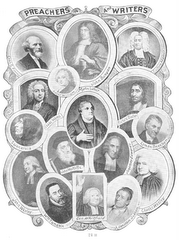Traditional Roman Catholic Theology
I’d like to spend the next several posts looking at distinctive traits of theological systems. These studies will be from the booklet Charts of Christian Theology and Doctrine by H. Wayne House. These are meant to teach historical facts about different theological systems.
Traditional Roman Catholic Theology.
Nature of Theology-Theology is constantly evolving in its understanding of the Christian faith. The Ignatian principle of accommodation and J.H. Newman’s principle of development reflect the changing nature of Roman Catholic theology. Catholicism’s trait of change is due mainly to the authoritative position given to church teaching.
Revelation-The Bible, including the Apocrypha, is recognized as the authoritative source of revelation as well as tradition and church teaching. The pope also makes authoritative pronouncements ex cathedra (from the chair) on issues of doctrine and morals; these pronouncements are immune from error. The church is the mother, guardian, and interpreter of the canon.
Many post-Vatican II Roman Catholic scholars have deviated from the traditional teaching of the church in this area, have embraced higher critical perspectives on Scriptures, and have rejected the infallibility of the pope.
Salvation-Saving grace is communicated through the seven sacraments, which are means of grace, Baptism, Confirmation, and Eucharist deal with initiation into the church. Penance and Anointing are concerned with healing. Marriage and Ordrs are sacraments of commitment and vocation.
The Church administers the sacraments through the ordained hierarchically ordered priesthood. The traditional view was that there was no salvation outside the church but recent teaching has recognized grace may be received outside the church.
Church-The four essential qualities of the true church are unity, holiness, catholicity, and apostolicity. Fundamentally the church is the ordained hierarchy, reaching its apex in the pope.
Organization is built around a centralized priestly authority beginning with Peter. The authority of the priesthood is derived through apostolic succession in the church. Bishops in Rome have power to evaluate findings of schools and make pronouncements and conciliar definitions.
The church is the mediator of Christ’s presence in the world. God uses the church as his agent to move the world toward toward his kingdom.
Mary- At the council of Ephesus (A.D. 431) Mary was declared to be the mother of God as well as the mother of Jesus Christ in the sense that the Son she bore was both God and man.
Four Marian feasts (annunciation, purification, assumption, and nativity of Mary) are observed.
Mary was without original sin or personal sin due to the intervention of God (immaculate conception).
Mary is the merciful mediator between man and Christ the Judge.
















No comments:
Post a Comment